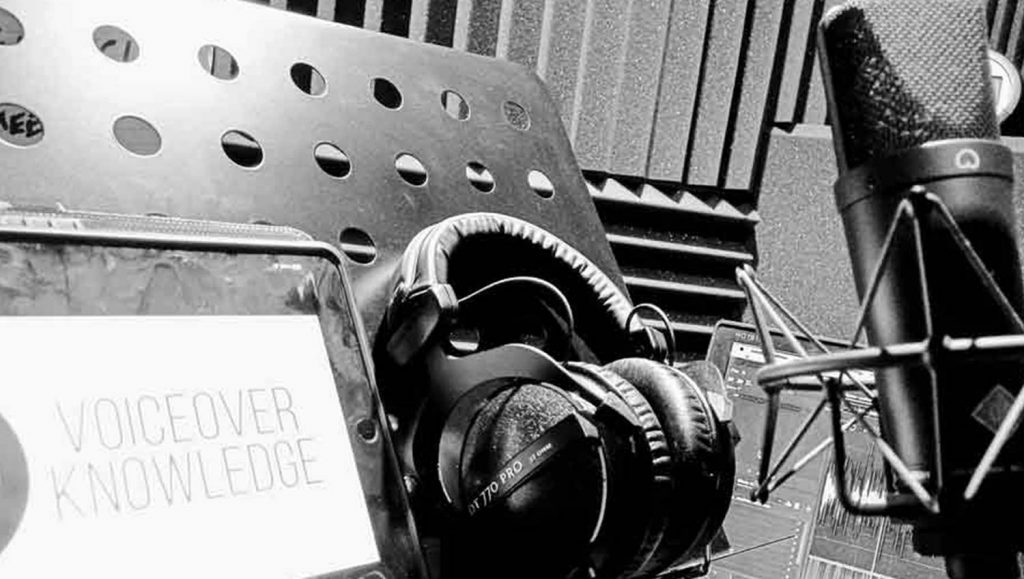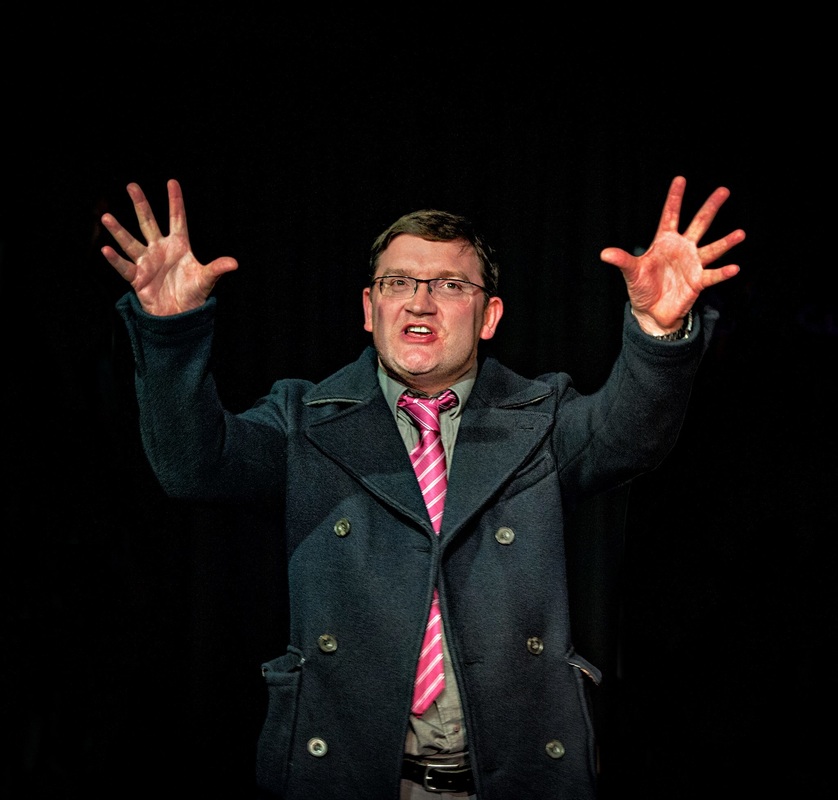
How do you build a voice-over home studio that will serve your career for years to come? What is the difference between acoustic treatment and soundproofing? Here’s some “must-have” knowledge before you spend on your voice-over booth.
Voice-over studio spaces are often overlooked. They can also be very expensive. If you’re a voice actor booked for a session at a professional studio, it’s easy to walk in and be wowed by the microphone, the desk or the other equipment. So much so, that you barely notice the room. I mean the four walls, the ceiling, the floor. Maybe you noticed that the door felt a little heavier than normal. The window panes were at funny angles.
When you are then faced with the challenge of replicating that in your own home, it’s easy to miss the importance the room plays in your requirements.
So let’s talk about a few things to do with your studio. This article is just about the room.
I’ll make it clear at this point, my experience is as a user of studios for 30 years. I am not an engineer. I’m sharing my interpretation. My aim is to provide some knowledge in layman terms. Get professional advice before spending money.
Table of Contents
Table of Contents
Voice Over Studio Acoustics vs Sound Proofing.
Let’s start here. So many people muddle these things up. They are two completely different things. Both are vital to a great studio.
Acoustics.
Acoustics deals with reverb and reflections (echoes) created by your voice in the booth or recording space. It is mostly treated by materials in the studio, such as acoustic foam tiles, bass traps, sound curtains etc. Acoustics are also impacted by the size and shape of the space.
In short, acoustics is about taming the ‘reflections’ of the recording space. If you’ve ever been in a big cavernous space and shouted and heard your echo, it’s that. An echo is simply your voice being reflected back a fraction of a second later.
Good quality audio starts with a pretty ‘dead’ sound. That means no echo. No reflection. Whatever you are voicing might have echo in the end, but if so it will be added by the producer. They can’t work with bad audio in the first instance.
Sound-Waves.
Your voice creates a sound wave.
You can feel the breath pushing it out of your mouth.
What you can’t see, is the wave projecting from your mouth in front of you to whatever it meets in its path. Without getting too technical and using big words even I don’t understand, a sound wave can bounce off a surface, be absorbed by the surface or dissipate or diffract in some other way. Often it will do all of these things.
In treating your booth acoustically, you’re trying to absorb some waves, and appropriately reflect some too. Acoustic tiles, panels, base traps can all help.
In a square room with shiny hard surfaces, waves will bounce back and forth. (Think tiled bathroom). It’s why odd shaped rooms can be better voice-spaces, because the waves are dissipated by bouncing in unusual directions.
Sloping ceilings, angled glass, base traps in corners are all features to help get rid of the waves. In audio we often talk about a studio being ‘dead’, meaning the reflections are removed. Sometimes when standing in these spaces, you may even feel a little like you are going deaf, because your sound doesn’t come back.
Sometimes people will talk of studios being alive, lively or bright. This means there is some reflection. In general, voice-over requires a pretty dead space. There is an occasional difference of opinion here. If you work in broadcast, radio for example, some brightness might be considered desirable. It adds a little ambiance to the sound. For me, in voice-over you want to give the producer the best chance of making whatever they want of the audio. If they want it bright, they add brightness. Not you. Your job is to provide the best quality raw product for them to work with.
Soundproofing
Soundproofing is about stopping external noise getting in (or sometimes out). Sound proofing is much more expensive and harder to achieve.
Soundproofing is also a little subjective. I have an opinion of what a professional standard is, but others will have different opinions. You also reach a point, where the benefit doesn’t match the increased spend. At a pro level, sound proofing can cost thousands.
Let’s be clear about one thing though. If a professional voice-over artist spends £15k on a booth to get great results, don’t be under the illusion that your £10 duvet over a room divider is just as good. Pros are not idiots. They pay that money for a reason. Your clever short cut, isnt.
Different genres of voice-over have different requirements. Sometimes you might get away with lower quality. But for a voice-over artist at the top of their game, you need a good quality recording space and it will cost money.
I often see questions on social media along the lines of, “I need to build a home studio. My budget is $400”. A nice idea, but get real.
I also see, “I’m living in rented accommodation. I need to soundproof and treat the space without leaving any marks”. Soundproofing generally requires density. Heavy-weight density. You have two choices here. You can buy a free standing booth, but you’ll need to have some budget. Or, if you have the skills and ability to build stuff, you can build one. Often this will mean leaving marks.
I’m a little embarrassed. I promised sound proofing detail. To be honest I’m about to be out of my depth. This is the area where it’s worth getting a professional opinion. But here goes…
Density is good. It can stop noise.
Sound transmits at different frequencies through objects of different densities. Air can also help in soundproofing.
Professional studios will have things like floating floors, de-coupled walls, and air gaps.
If you’re turning a room into a studio, you’ll need to think about how you can separate every surface from the structure. Otherwise you will have noise transmission in.
If you’re building a booth. You’ll want a solid floor wherever you put it. You’ll also want to take steps to separate it from any surface. It will be completely detached. Many put neoprene, rubber feet or treat a booth in some other way to limit sound transmission through the floor. The booth will probably have several layers of different dense material. It may have an air gap.
Okay, I’ve hit my sound proof wall of knowledge. The main thing to take away from this is that some significant engineering is involved. It’s likely your walk-in closet will need some serious structural work to make it completely soundproof.
The problem with most soundproofing is you don’t see it. Studios spend thousands of pounds on their infrastructure, but you can walk into their studio and it looks just like a room. The need for it is often overlooked by newbies.
Things To Think About When Planning A Voice-Over Studio.
It’s worth considering a number of issues when planning a voice-over studio. Everyone’s situation is different. Not all residential settings are appropriate. If you’re serious about a voice career, I would certainly factor in your requirements to your choice of home.
Noise.
Many things can create noise that we don’t even think about. Subconsciously, we screen them out. Noises like: People running up stairs next door, dogs barking, lawnmowers, birds, aircraft noise, rumble from traffic nearby, washing machines, central heating pipes, etc. Trust me, any of these can ruin your work.
If you’re able to build or buy something with the robustness of a nuclear bunker, you’ll be on your way. Bear in mind that noise has different frequencies and can travel through different things. Screening out aircraft noise and barking dogs is easier than the rumble of passing traffic or the vibrations from your neighbour. Low rumble noise tends to come through structure. It will be hard to eliminate. You often ‘feel’ that passing truck.
In terms of noise-level, I would say you should be working to a noise-floor of at least -60db. Turn your microphone on, and set to the correct level, and record the silence. It probably won’t be. Electrical equipment makes noise. Even a microphone has an amount of “self-noise”.
Voice-Over Booths.
For booths, check out: Studiobricks, Kube, DemVox and Whisperroom. I would urge you to check the differences between models and understand the limitations of each one. Depending on the model and extras, I’d expect to spend between £5k and £15k.
One word of warning regarding pre-built booths or even one you might build yourself… They can be *extremely* heavy. 800kg in a space of less than 2 square metres is considerable. Certainly heavier than UK building regs suggest for some modern housing. Unless you know your floor is rock solid, I would seek out the advice of a structural engineer. Unless you fancy your big new investment dropping into your kitchen on the floor below.
Bear in mind that not all booths were originally designed for voice-over artists. We’re quite a niche industry. Some were designed for musicians to practise inside and were originally designed to keep noise in, rather than out. Often booths for this purpose reduce noise rather than block it out. It’s a subtle difference that may be noticeable.
There are also many “vocal booths” in the corporate sector, used as quiet spaces for staff to make phone calls away from open plan offices. Their idea of ‘quiet’ is not the same as in voice-over. Without significant work, these are probably not suitable.
Double-check how many layers or walls the booth you’re considering has. Most ranges start with a single-wall version, of which I’m not a fan. I don’t think they provide enough sound reduction. If controlling noise is your concern, then you’ll need to look at a higher spec model.
You’ll want to get some personal recommendations and test out a booth in-person before making that commitment. Many providers supply a range, for example a differing number of layers, so make sure you know the differences and limitations between models.
Self-Built Voice-Over Booths.
If you have the ability to build something, then density and/or air gaps are the best way to create sound proofing. If you build your own booth – don’t use existing floors, walls or ceilings – as noise will transfer. Aim for a “room within a room”. This is why manufactured voice-over booths are so successful, because they are literally that. Completely self contained and detached.
Make-Shift Voice-Over Booths.
There are lots of other suggested ideas out there. In my humble opinion many will make little or no difference. I have a ‘reflexion filter’ in the loft gathering dust. It looked sexy on the X-Factor. It made next to no difference. Some of these solutions may get you out of a hole on a particular project, but nothing replaces a real booth.
There are two other things to consider with makeshift set ups: A lot of online discussion about portable kits takes place. Bear in mind that some voice-over artists will have a travel kit for auditions or emergencies. It’s not necessarily for normal use.
In auditions, the audio quality is not as vital. Portable kit can be great if you need to submit from your holiday villa for a job that you will do when you get home.
In an emergency, a producer can work with bad audio to some extent if they really want to. This means, if the voice-over *must* be you, they’ll go the extra mile to make the recording work. However, you would have to be exceptional for them to pick you with your bad studio set up over another option if they just need *a* voice-over. Like most things, producers are looking for the easy path. If it’s a choice between a talent with a good studio and you with a bad one, you’ll lose.
Studio Quality vs Different Genres of Work.
Your studio quality might be dictated by the kind of work you’re hoping to do. If you’re recording an audiobook in your own time, you can stop and start as needed. Therefore noise interruption might just be an occasional frustration. If you audition for a TV ad and get the gig, you’re possibly going to be connected to an L.A. studio for a live session. The studio, the director, the engineer will all be on the clock by the hour. If a barking dog destroys that session wasting all that time and money, you’ll never work with them again.
If your space is quiet at 3am, and you have the flexibility to be able to record like that, then it might work. Although other people around you may not be happy with that arrangement. When everything else is silent, don’t underestimate how voicing at full volume will disturb someone in the next room. Especially when it’s not soundproofed.
Conclusion.
Acoustics is the process of making the sound in the room good.
Soundproofing is stopping external sound getting into the room.
Noise is your nemesis. It can be expensive to keep out. A duvet won’t cut it.
About The Author

Tony Collins-Fogarty
British Voice-Over Artist and Actor
Tony Collins-Fogarty is a British Voice-Over Artist, with a background in broadcast, alongside training as an actor. His radio career began in 1988. He began providing voice-overs regularly in 2005, becoming full-time in 2012. Commercially, he is best known as the brand voice of Tripadvisor, on TV in the US, Canada and the UK.


Social